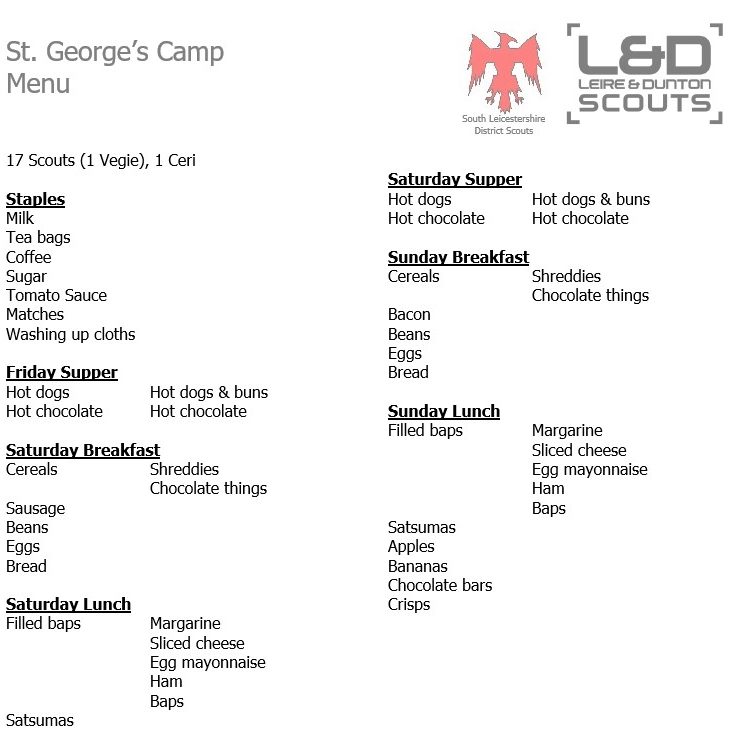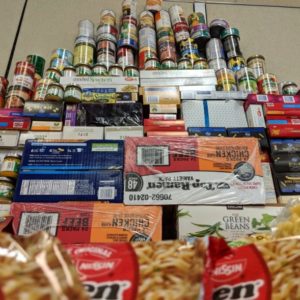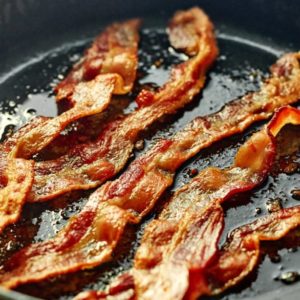
Dietary Requirements
It’s very important that you know everyone’s dietary requirements before you plan your menu. Some people may be allergic to some foods, some may be vegetarian, some may not eat particular foods for religious reasons, and some Scouts may simply just not like some foods. Allergic reactions can be mild and be dealt with by taking tablets, but they can also be severe, in some cases life threatening. So it is absolutely essential that you know about any potential issues.
As you’ve been on plenty of camps before, you’ll have a good idea of what foods the majority of Scouts will eat, so use that as a starting point. Don’t be afraid to try other things, but perhaps involve the other Scouts in the discussion.
Backup Food
Whatever you put on your menu, have backup food. Cereal, cereal bars, bread, jam, that kind of thing. Basically, any food that absolutely anyone would eat. You can use this if food gets burnt, if it turns out that (despite your careful menu planning and talking to the Scouts beforehand) a Scout doesn’t like the food you’ve provided. You can also use this if a Scout complains of feeling hungry outside of meal times.


How Much Food?
So, how much food do you actually need? This is something that comes with experience, and it varies considerably with the weather conditions. Ask Ceri or one of the other leaders for advice about the quantities you need for various dishes. You burn far more calories when you’re camping than when you’re at home, so however much you’d need to make a meal at home, you’ll need more.
If it’s cold when you’re camping, you’ll need more food – more ‘solid’ warming food that will give you energy.
If it’s hot, you still need hot food, but you won’t want to be cooking in the middle of the day, so just go for lighter things for lunch. You’ll also need more drinks (squash).
Cooking Methods
When you’re planning your menu, you’ll also need to consider the cooking method(s) you’ll use. Although it’s not impossible, it would take a lot more effort and organisation to just ‘throw something in the oven’ as you would at home.
As you know, we mainly use gas stoves on camp, and open fires. So the main cooking methods available will be –
You can make a rudimentary oven to cook with on a stove or open fire. Either with a large billy turned on its side and tin foil to cover the opening, or you can use a metal biscuit tin. We’ve used metal biscuit tins to cook pizzas on an open fire – the pizza goes in the lid, place the body of the tin over the top and cover the tin with hot embers.








